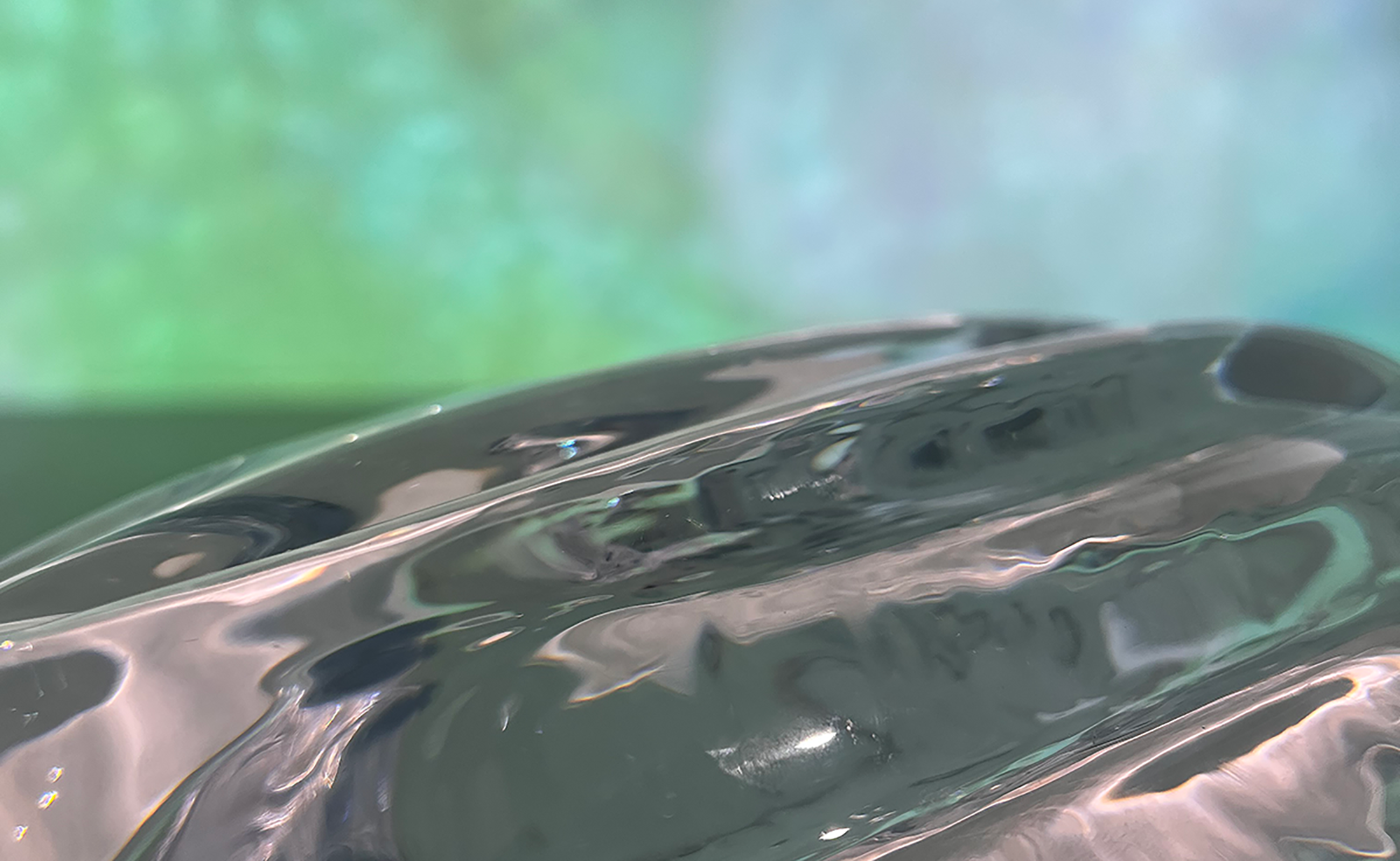
Growler, 2024, hard-sculpted glass, 78 x 16 x 6.5 cm.
Sneaky Feelers, 2024, hard-sculpted glass, 45.5 x 11.5 x 6 cm (left) & 29 x 14 x 6 cm (right).
Love Darts, 2024, hard-sculpted glass, 44.5 x 11.5 x 5.5cm (left) & 27 x 14 x 6.5 cm (right).
Love Darts, 2024, hard-sculpted glass, 44.5 x 11.5 x 5.5cm (left) & 27 x 14 x 6.5 cm (right).
Growler, Sneaky Feelers and Love Darts combines the quantum qualities of glass with parts of a snail’s body.
Perhaps surprisingly, glass and quantum particles like the electron have uncanny similarities. They both melt and become fluid at certain temperatures. Glass melts when it is around 1500 degrees celsius and quantum particles become wave-like when they are at absolute zero (-273 degrees celsius).
Both glass and quantum particles become fixed and rigid in our everyday Newtonian world.
The Growler series explores this apparent state of in-between, where the glass assumes a slimy quality, becoming a tactile, ever-changing intervention in the gallery space.
Slime is a reoccuring motif in Heaney’s practice symbolising the unstable nature of reality and the monstrous nature of self. It is is also an entangling substance. Susanne Wedlich notes in her book The Natural History of Slime: there is no form of multicellular life that does not contain some sort of slime, muscus or viscous gel.
In combination with the surrounding projected video works, Heaney sees the clear sculptures as petri dishes for entangling images of the environment.
By conceptualising glass through quantum physics, Heaney is proposing a new interpretation to Lewis Carroll’s iconic Looking Through the Looking Glass (1871). What if the fantastic world described by Carroll, where everything is upside down – even logic, instead describes the quantum world?
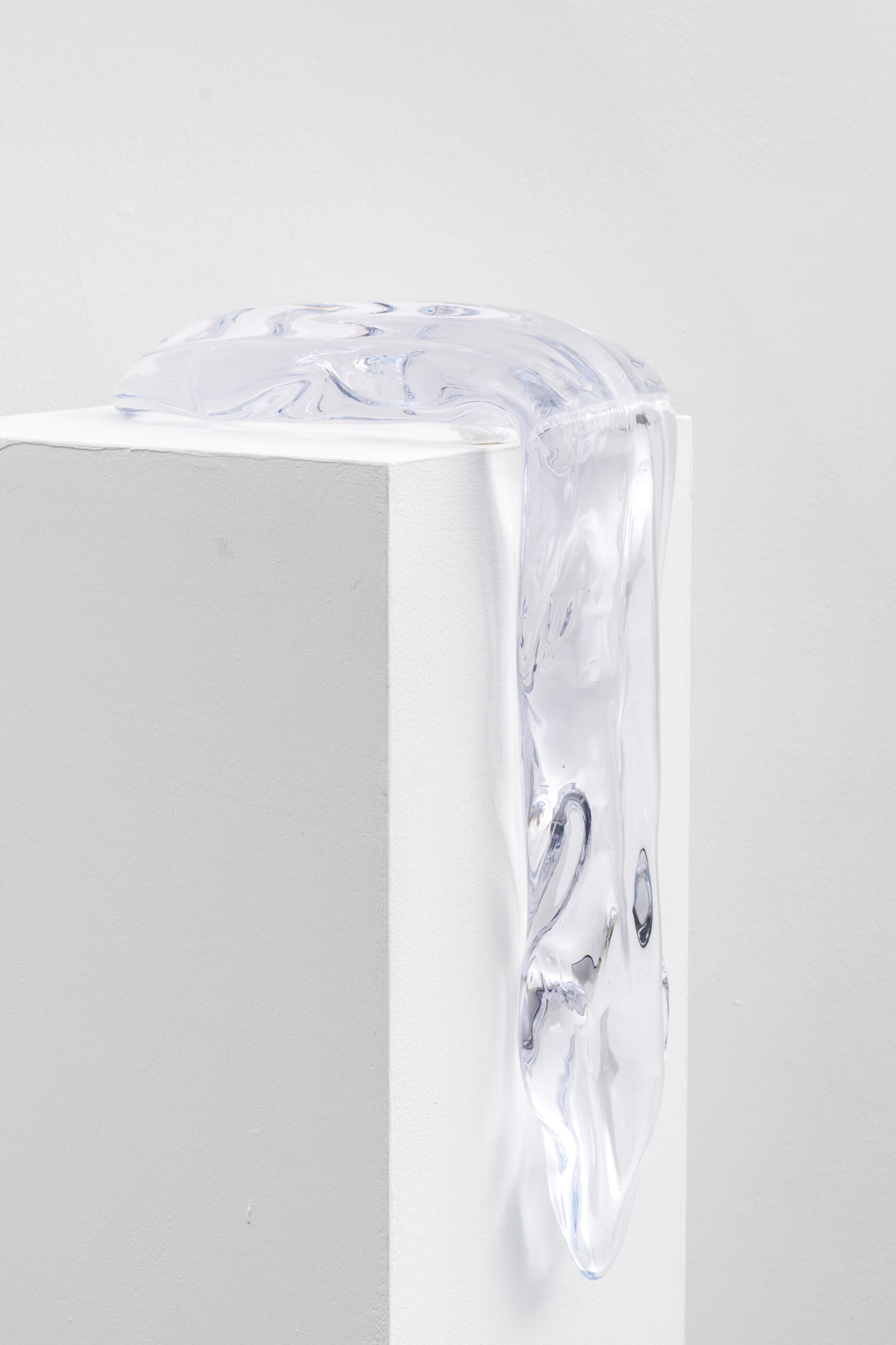
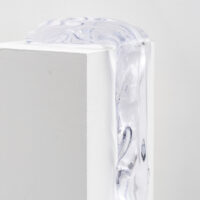
Growler, 2024. Photo credits: Gazelli Art House.

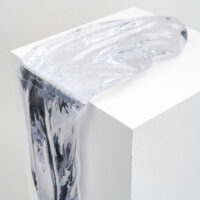
Growler, 2024. Photo credits: Gazelli Art House.
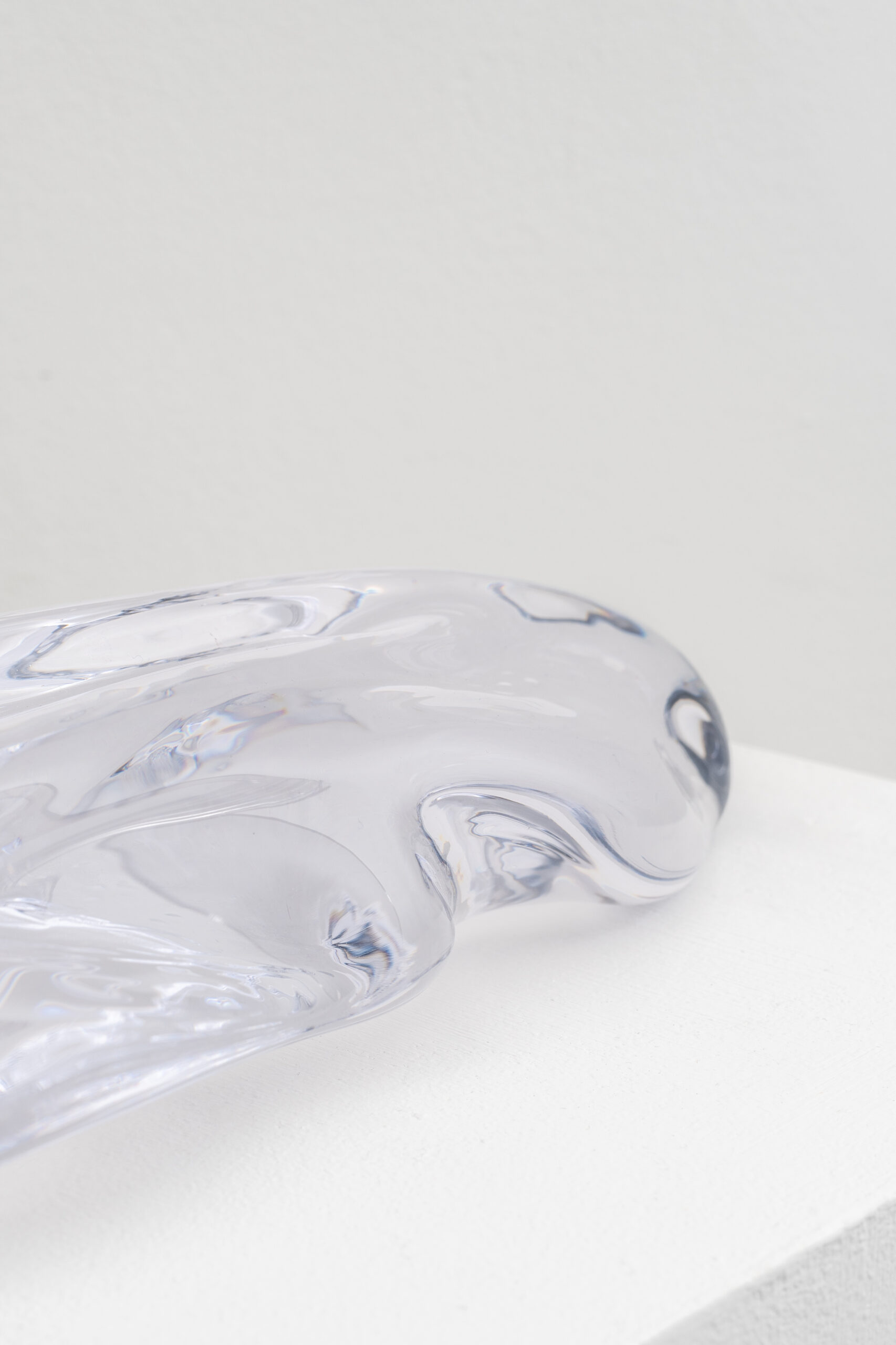
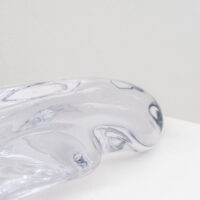
Growler, 2024. Photo credits: Gazelli Art House.
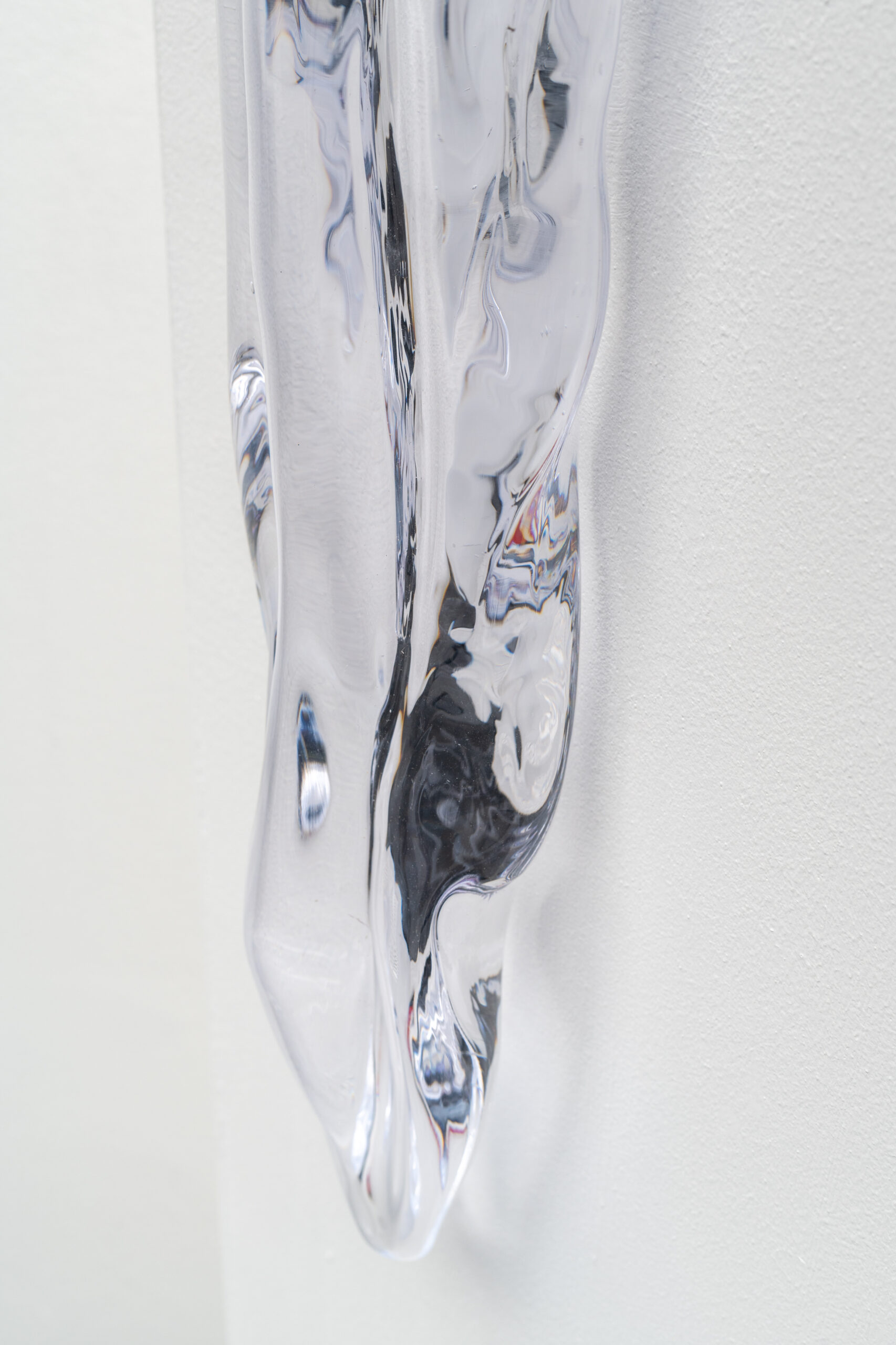
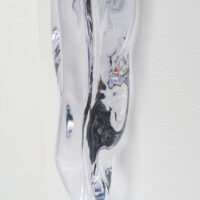
Growler, 2024. Photo credits: Gazelli Art House.
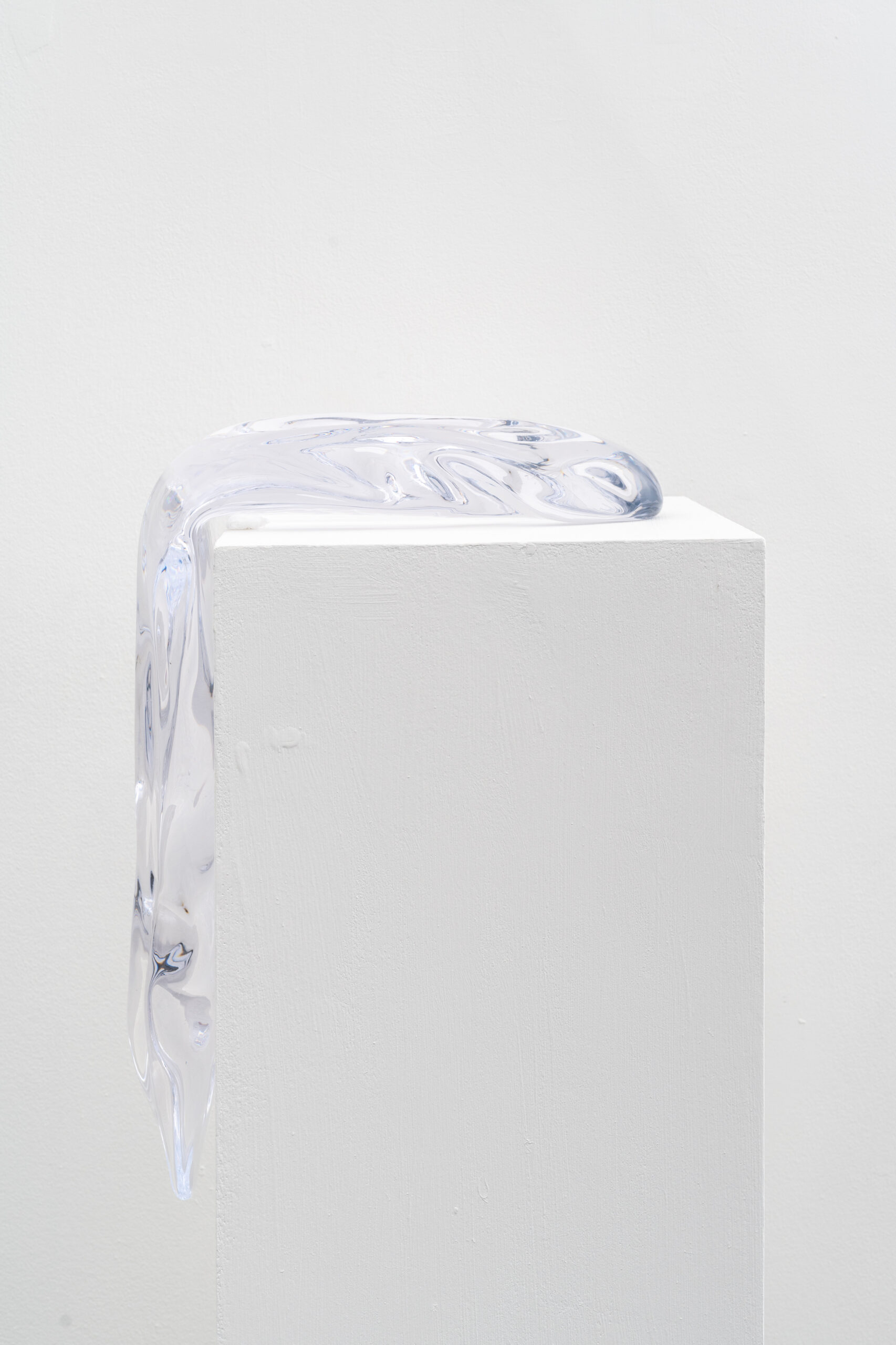
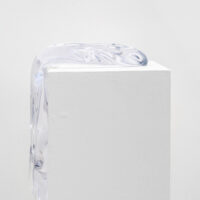
Growler, 2024. Photo credits: Gazelli Art House.


Sneaky Feelers, 2024. Photo credits: Gazelli Art House.
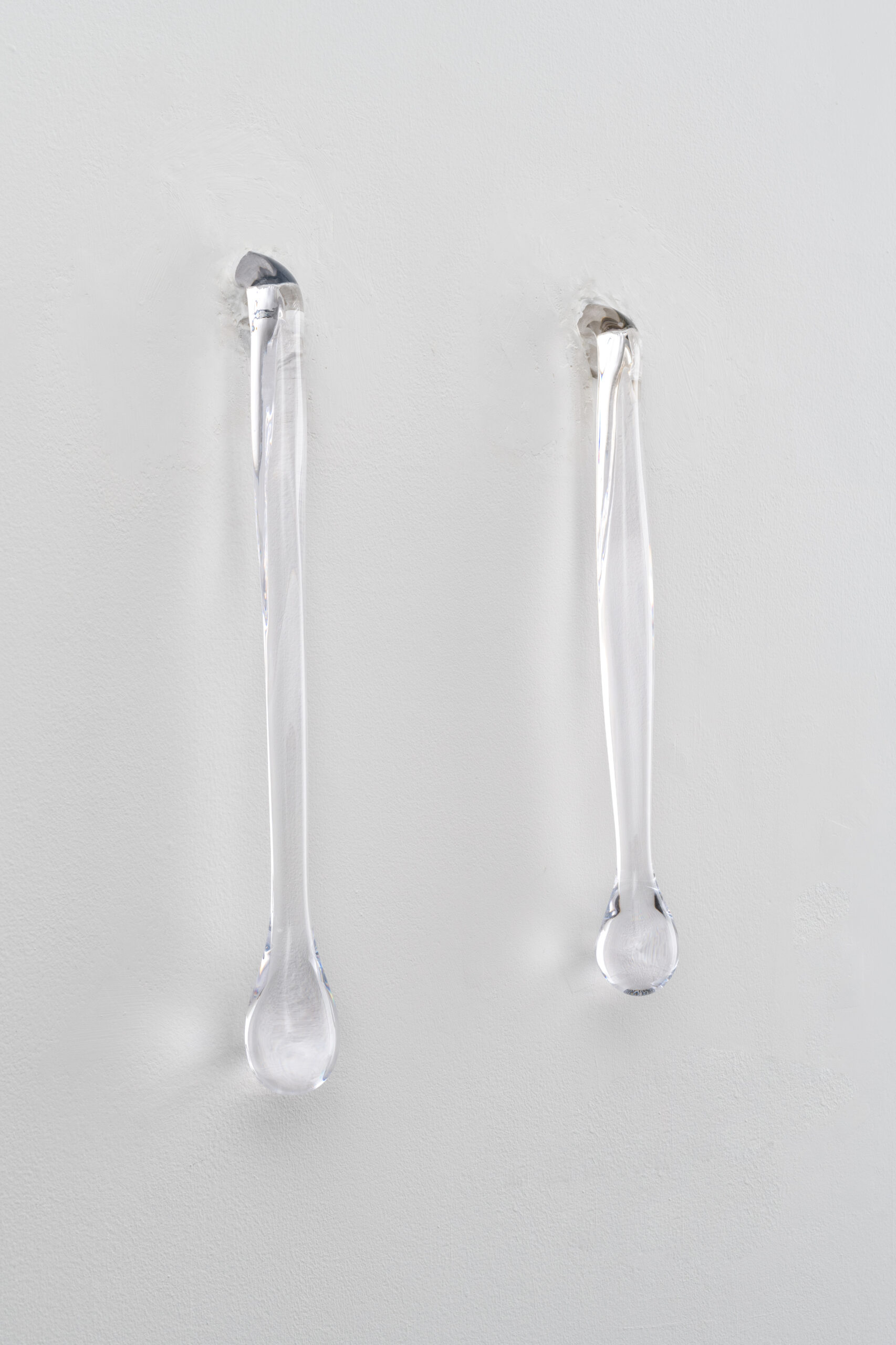

Sneaky Feelers, 2024. Photo credits: Gazelli Art House.
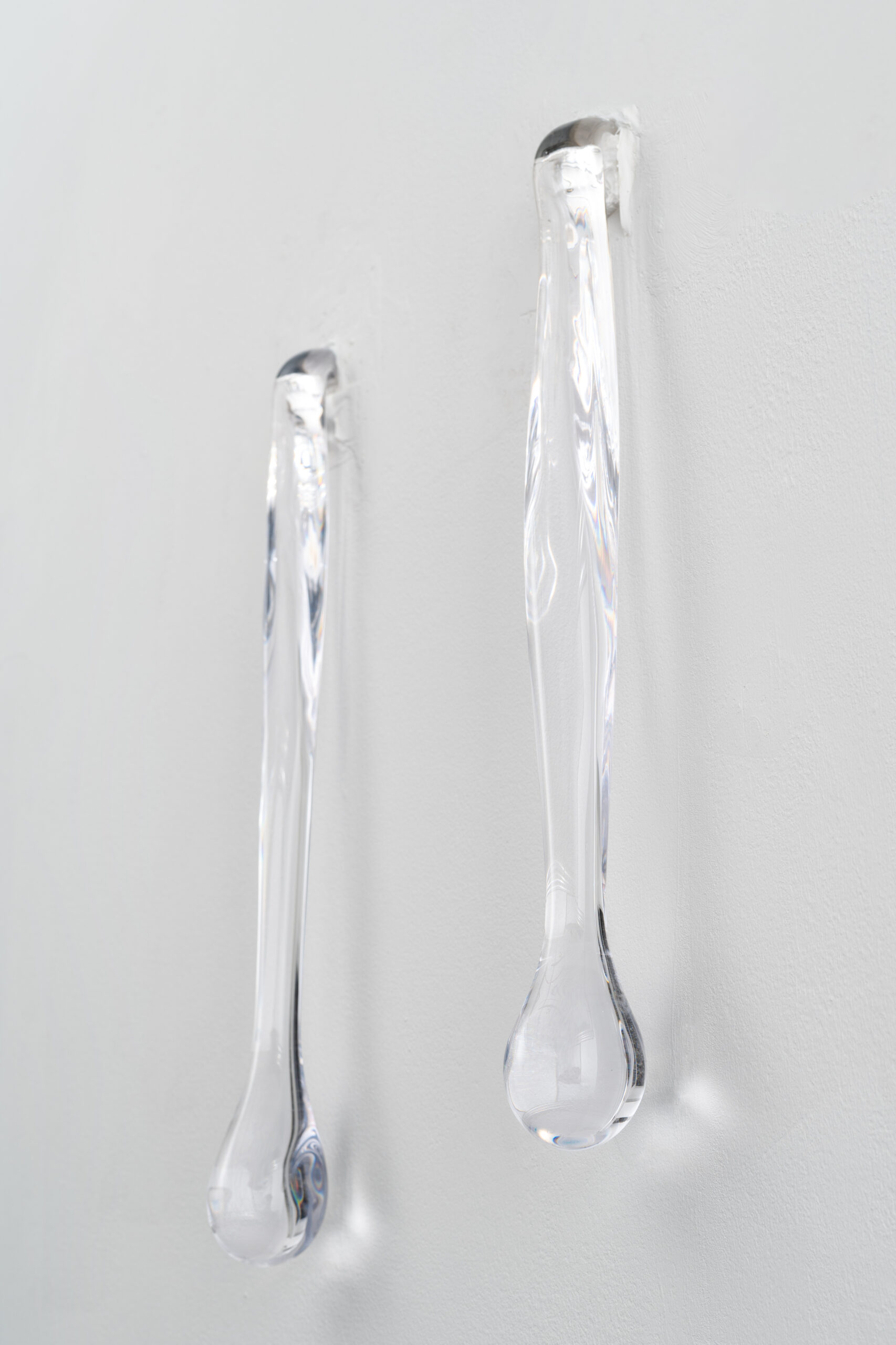

Sneaky Feelers, 2024. Photo credits: Gazelli Art House.
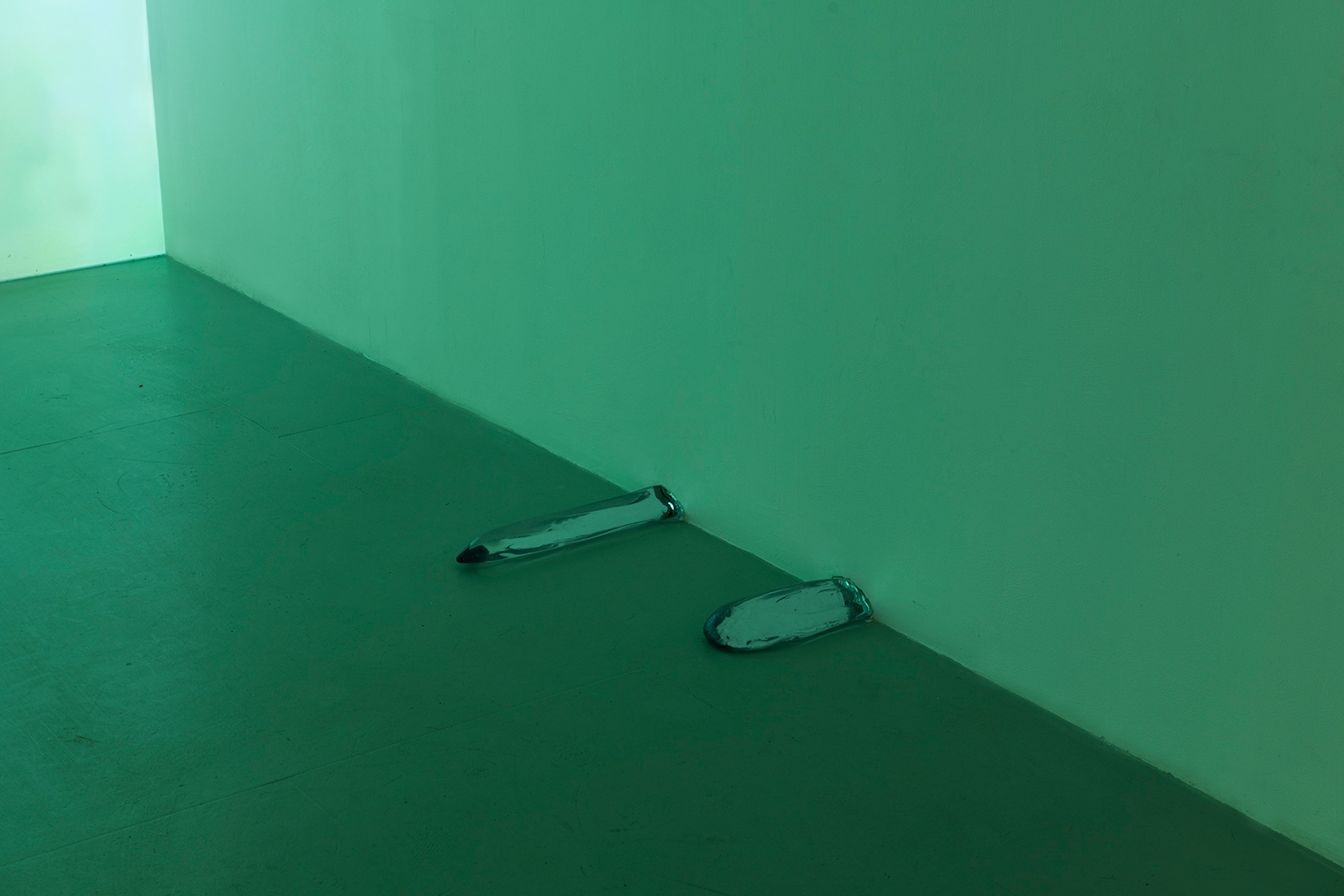
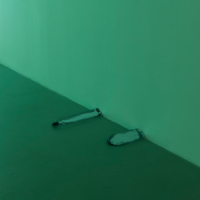
Love Darts, 2024. Installation view: 'Ooze Machines', Phoenix Art Space x Brighton Festival. Photo credits: Bernard G. Mills.
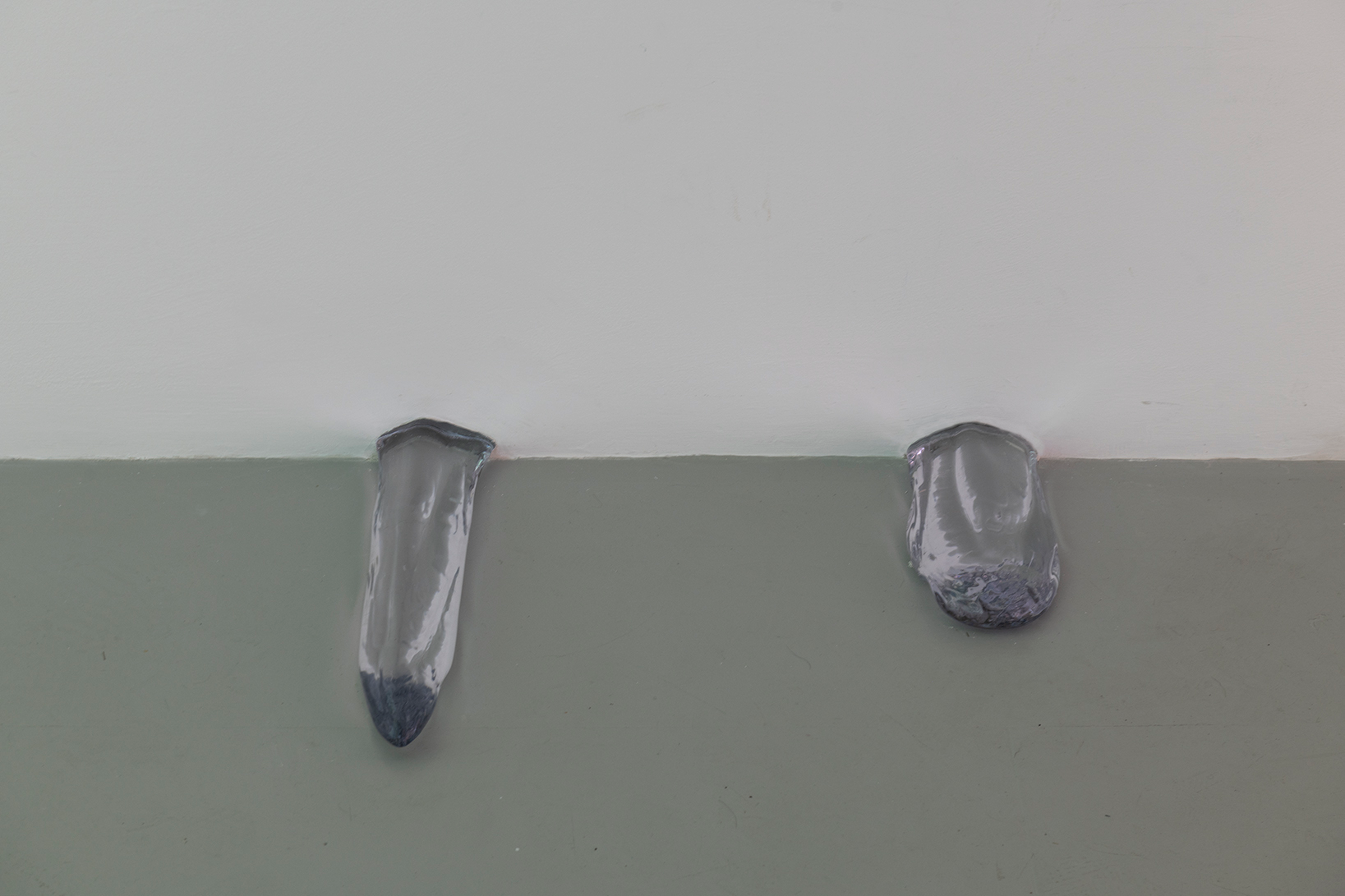
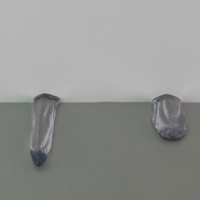
Love Darts, 2024. Installation view: 'Ooze Machines', Phoenix Art Space x Brighton Festival. Photo credits: Bernard G. Mills.
